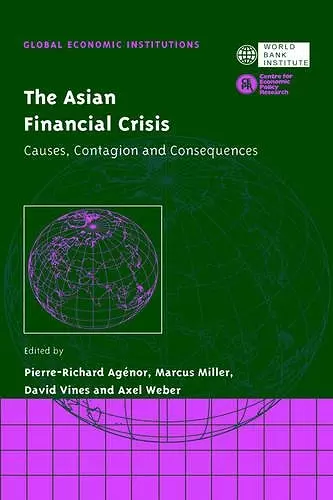The Asian Financial Crisis
Causes, Contagion and Consequences
Marcus Miller editor Axel Weber editor David Vines editor Pierre-Richard Agénor editor
Format:Hardback
Publisher:Cambridge University Press
Published:4th Nov '99
Currently unavailable, and unfortunately no date known when it will be back
This hardback is available in another edition too:
- Paperback£36.99(9780521029001)

The first theoretical analysis of the Asian financial crisis, perhaps the single most important economic event of the 1990s.
The first theoretical analysis of the Asian financial crisis. It starts by presenting a factual and analytic overview of what happened, goes on to consider: why crisis turned into collapse, the onset of speculative attacks, contagion, and finishes with a round table discussion of policy issues.Presents the first theoretical analysis of the Asian financial crisis and draws out the general lessons of an event whose potential long term effects have been likened to those of the Crash of 1929. Part I presents a factual and analytic overview of what happened: the role of 'vulnerability'; the interconnection between currency crises and financial crises; and why crisis turned into collapse. Part II considers more detailed issues, including how the inflation of non-traded goods prices created vulnerability, welfare-reducing capital inflow owing to under-regulated financial markets, and the onset of speculative attacks. Part III assesses all aspects of contagion, in particular the role of geographic proximity. The final section addresses policy issues. Joseph Stiglitz argues that there is much that can be done to reduce the frequency of crises and to mitigate the severity of crises when they happen. The book finishes with a round-table discussion of policy issues.
ISBN: 9780521770804
Dimensions: 236mm x 160mm x 35mm
Weight: 789g
448 pages